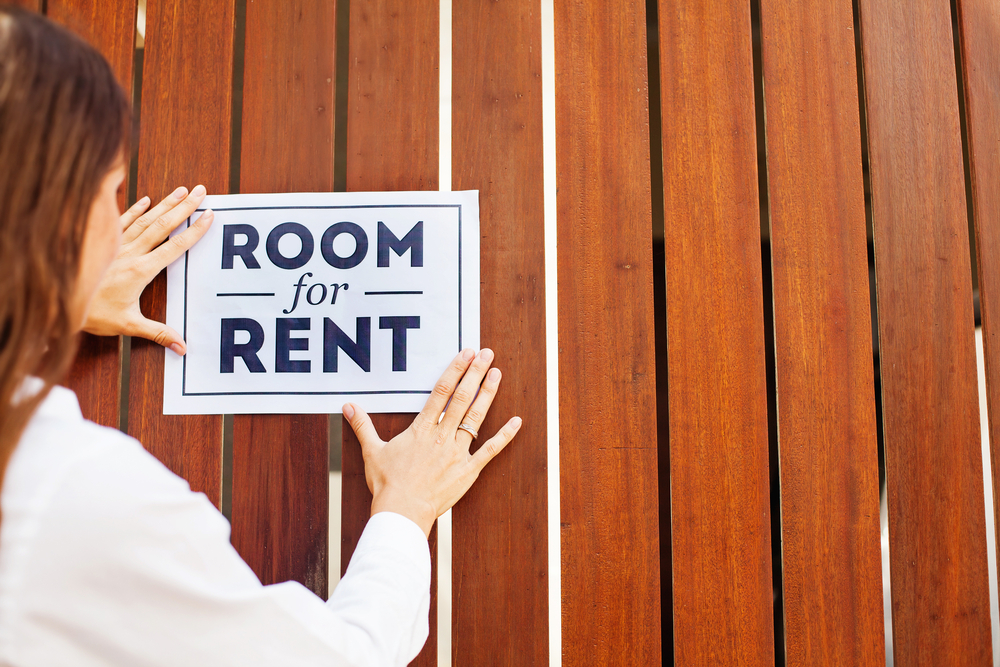Saving for your first home is a big deal, especially in a state like California, where the housing market is as competitive as it is expensive. I’ve called California home since 1997, and I can tell you there is so much to enjoy in this state. From its breathtaking coastlines and iconic national parks to its vibrant cities and diverse communities, living here offers countless rewards. Whether you’re dreaming of a cozy bungalow by the beach or a modern condo in the city, the key to success is a solid savings strategy. The good news? With a bit of planning, discipline, and creativity, you can make your homeownership dream a reality. Let’s break it down.
How Much Do You Really Need?
First things first: how much money do you actually need to save? While the golden rule of a 20% down payment is ideal for avoiding private mortgage insurance (PMI), it’s not always required. Many loans, like FHA loans, allow for as little as 3.5% down. On a $500,000 home (a modest price in California), that’s $17,500. However, a larger down payment can mean lower monthly payments and less interest paid over time—a win-win!
If you have served in the military (BTW…thank you for your service), you may be eligible for a VA Loan, which has the added bonus of requiring zero down payment. This can be an incredible opportunity for veterans and active-duty service members to become homeowners with minimal upfront costs.
Also, don’t forget closing costs, which typically add 2-5% of the purchase price. For our $500,000 home example, you’re looking at an additional $10,000 to $25,000. It’s important to factor in these costs early on to avoid sticker shock.
Start with a Budget
Saving for a home starts with understanding your finances. The first step? Create a dedicated budget that aligns with your income, expenses, and savings goals. A clear budget will not only help you track your progress but also ensure you’re saving efficiently without feeling overwhelmed. 
-Track Your Spending
Use tools like Mint, You Need a Budget (YNAB), or even a simple spreadsheet to monitor your expenses. Categorize your spending into essentials (like rent and groceries), non-essentials (like entertainment and dining out), and savings. This will help you identify areas where you can cut back and reallocate funds toward your home savings.
-Set Up a Dedicated Savings Account
Open a high-yield savings account specifically for your down payment. This type of account offers higher interest rates than traditional savings accounts, allowing your money to grow faster. Keeping these funds separate from your everyday accounts also reduces the temptation to spend them.
-Use the 50/30/20 Rule
The 50/30/20 rule is a budgeting guideline where 50% of your income goes to needs, 30% to wants, and 20% to savings. While this is a great starting point, you can adjust the percentages to prioritize your down payment. For example, temporarily allocate 40% to savings by reducing spending on wants. How bad do you want this?
-Automate Your Savings
Set up automatic transfers from your checking account to your dedicated savings account. Treat your savings like a fixed monthly expense to ensure consistency. Automation removes the hassle of remembering to save and helps you stay disciplined.
-Eliminate Unnecessary Expenses
Review your subscriptions, memberships, and recurring charges. Cancel services you don’t use often, and consider switching to lower-cost alternatives for essentials like internet or phone plans. Even small cuts can add up over time. Review your subscriptions, memberships, and recurring charges. Cancel services you don’t use often, and consider switching to lower-cost alternatives for essentials like internet or phone plans. Even small cuts can add up over time. Essentially we are talking about the compound effect here.
If you’re an iPhone user, go into your settings, click on your account, then subscriptions, and verify everything in there you need. Even as I’m writing this, I found something I no longer need that was going to bill me for annual service next month. Savings!
-Create Mini Milestones
Breaking your savings goal into smaller milestones can make the process feel more manageable. For instance, aim to save $5,000 within six months, then reassess and set a new target. Achieving these bite-sized goals does so much for your confidence and reinforces that your ultimate goal is within reach. Celebrating these milestones can keep you motivated.
Boost Your Income
While budgeting helps you save more from your current income, increasing your earnings can supercharge your savings. With the high cost of living in California, finding ways to boost your income can make a significant difference in reaching your down payment goals faster. Here are several strategies to explore:
-Take on a Side Hustle
Consider freelancing, driving for rideshare services, or selling items online. Platforms like Etsy, Upwork, and TaskRabbit can help you earn extra cash. If you have a hobby or skill, such as graphic design, photography, or crafting, turn it into a money-making opportunity. Dedicate all side hustle income directly to your home savings account to maximize its impact.
I mentioned photography above; one of my other companies is a photography platform. I know many photography enthusiasts who had an eye for photography, owned the camera gear, and turned their hobby into a lucrative side hustle. Some sold prints, others started taking portraits and even shooting weddings. A few did so well that they even changed careers and now are full-time professional photographers!
-Ask for a Raise or Change Jobs
Evaluate your current job situation and consider asking for a raise if you’ve been consistently performing well. Research similar roles in your industry to benchmark your salary. If your current job lacks growth opportunities, look for a higher-paying role, especially in California’s thriving industries like tech, healthcare, and entertainment. A strategic career move can significantly boost your income and speed up your savings.
-Rent Out a Room or Your Space
If you’re currently renting a larger space, consider renting out a spare room to reduce your housing costs. Alternatively, if you own your home or lease a property that permits subletting, platforms like Airbnb can help you generate extra income. Hosting short-term rentals can be a lucrative way to earn money for your down payment. 
-Sell Unused Items
Declutter your home and sell unused items on platforms like eBay, Poshmark, or Facebook Marketplace. It’s a win-win: you make extra money and free up space for your future home. Items like old electronics, furniture, or even designer clothes can fetch a good price. Dedicate a weekend to sorting through your belongings and listing items online.
-Explore Passive Income Opportunities
Consider options like dividend-paying stocks, renting out equipment (e.g., cameras, tools), or creating digital products like e-books or courses. While passive income takes effort to set up initially, it can provide a steady stream of earnings over time to supplement your savings efforts.
-Leverage Gig Economy Platforms
Apps like DoorDash, Instacart, and Rover offer flexible opportunities to earn additional income. Whether you’re delivering groceries, walking dogs, or running errands, these gigs can be fit around your existing schedule and add to your home savings fund.
While budgeting helps you save more from your current income, increasing your earnings can supercharge your savings.
Consider Savings Plans and Investments
Your savings shouldn’t just sit idle. Making your money work for you can accelerate your progress toward a down payment. Again we are talking about the compound effect, every bit helps! Here are several strategies to optimize your savings:
-High-Yield Savings Accounts
These accounts offer higher interest rates than traditional savings accounts, helping your money grow faster. Look for options with no monthly fees and competitive annual percentage yields (APY). Online banks often provide the best rates, so do some comparison shopping to find the right fit.
-Short-Term CDs
Certificates of Deposit (CDs) can offer better returns for money you won’t need immediately. CDs come with fixed terms, usually ranging from a few months to a few years, and offer higher interest rates than standard savings accounts. Be sure to pick a term that aligns with your home-buying timeline to avoid early withdrawal penalties.
-Money Market Accounts
A money market account combines the features of savings and checking accounts, offering higher interest rates with some flexibility for withdrawals. While they often have minimum balance requirements, they can be a great option for storing your down payment savings.
-Employer Match Programs
Some employers offer assistance programs that match your contributions toward a down payment or provide housing-related benefits. Check with your HR department to see if these options are available. If offered, take full advantage, as this is essentially free money toward your goal.
-IRA Withdrawals
First-time homebuyers can withdraw up to $10,000 from their IRA penalty-free to use toward a down payment. However, keep in mind that taxes may still apply, especially for traditional IRAs. Consult with a financial advisor to determine if this is a suitable option for your situation.
-Automated Micro-Investing Apps
Apps like Acorns or Stash can help you invest spare change by rounding up your everyday purchases to the nearest dollar. Over time, these small contributions can add up and grow through market investments. While this won’t replace a dedicated savings account, it’s a useful supplementary strategy.
-Consider Treasury Bonds or Low-Risk Investments
If you have a longer savings timeline, low-risk investments like Treasury bonds can provide better returns than a savings account. These are government-backed, ensuring stability and security for your funds.
Your savings shouldn’t just sit idle. Make your money work for you by choosing the right savings tools.
Cut Back on Non-Essentials
Small sacrifices now can lead to big rewards later. By trimming unnecessary expenses, you can free up more money to save toward your down payment. Here are some practical ways to cut costs:
-Eat Out Less
Cooking at home is not only healthier but also significantly cheaper. Plan your meals for the week, shop with a list, and prepare meals in bulk to save time and money. Treat dining out as an occasional treat rather than a daily habit—even cutting back by one or two meals out per week can save hundreds over a few months.
-Cancel Unused Subscriptions
Take a closer look at your subscription services, such as streaming platforms, gym memberships, or apps. Are you actually using all of them? If you’re an iPhone user, go into settings, click on your account, then subscriptions, and verify what you’re still using. Even as I’m writing this, I found a subscription I no longer need that was about to renew. That’s instant savings!
-Buy Used or Borrow
Before purchasing new items, consider buying secondhand or borrowing from friends. Platforms like Facebook Marketplace, OfferUp, and thrift stores are great for finding deals on furniture, tools, or appliances. For items you’ll only need temporarily, borrowing can be a no-cost solution.
-Downsize Temporarily
If you’re currently renting a large space, consider downsizing to a smaller, more affordable home or apartment while you save for your future home. A temporary move could significantly reduce your monthly housing costs, allowing you to allocate more toward your savings.
-Reduce Energy Usage
Simple changes like unplugging electronics when not in use, switching to energy-efficient light bulbs, or adjusting your thermostat can lower utility bills. These small adjustments can lead to noticeable savings over time.
-Embrace Minimalism
Adopt a minimalist mindset by focusing on needs over wants. Before making any purchase, ask yourself if it’s truly necessary or if that money would be better off in your home savings account. Cutting down on impulse buys can have a big impact on your financial goals.
California-Specific Assistance Programs
If saving feels daunting, you’re not alone. Thankfully, California offers several programs to help first-time buyers.
-CalHFA (California Housing Finance Agency)
- MyHome Assistance Program: Provides a deferred-payment loan for down payments and closing costs.
- ZIP Extra Program: Offers help with closing costs for eligible buyers.
-Local Programs
Cities and counties often have their own assistance programs. For example:
- Los Angeles County HOP: Helps with down payment and closing costs.
- San Francisco DALP: Provides a deferred loan for up to $375,000 to help first-time buyers.
-Shared Equity Programs
Some programs partner with buyers to split equity in the home, reducing upfront costs. While this means sharing future gains, it can make homeownership more accessible.
Plan for the Long-Term
Saving for a down payment is just the beginning. Homeownership comes with ongoing costs and responsibilities that you’ll need to prepare for to avoid financial stress. Here’s how to plan effectively:
-Build an Emergency Fund
Before buying, aim to save 3-6 months of living expenses to cover unexpected costs like repairs, medical emergencies, or job loss. Owning a home can bring surprise expenses, such as a leaky roof or a broken HVAC system, so having a safety net is essential. Consider setting up a separate emergency fund in a high-yield savings account to ensure quick access to funds when needed.
-Factor in Additional Costs
Beyond the down payment, there are several one-time and ongoing costs associated with homeownership:
- Closing Costs: These typically include appraisal fees, title insurance, and escrow fees, which can range from 2-5% of the home’s purchase price.
- Moving Expenses: Hiring movers or renting a truck can add up quickly, especially for long-distance moves.
- Home Maintenance: Budget 1% of your home’s value annually for repairs and upkeep. For a $500,000 home, that’s $5,000 per year.
- Property Taxes and Insurance: Research local property tax rates and shop around for homeowner’s insurance to estimate these recurring expenses.
-Plan for Upgrades and Customizations
Many first-time homeowners want to make their new home feel like their own. This could include painting, landscaping, or even larger renovations. It’s a good idea to allocate a portion of your budget for these projects to avoid overextending yourself financially after the purchase.
-Consult Professionals
Navigating the financial aspects of homeownership can be overwhelming, especially in a high-cost state like California. Work with professionals such as:
- Financial Advisors: They can help you create a long-term plan that aligns with your homeownership goals.
- Mortgage Brokers: These experts can guide you through loan options and find the best terms for your situation.
- Real Estate Agents: A knowledgeable agent can help you understand the full scope of costs and find a home within your budget.
-Consider Future Financial Goals
Owning a home is a major milestone, but it’s not the end of your financial journey. Keep future goals in mind, such as saving for retirement, college funds, or additional real estate investments. Ensure your homeownership plan leaves room for these priorities.
Saving for a down payment is just the beginning. Homeownership comes with ongoing costs that you’ll need to prepare for.
Final Thoughts: One Step Closer to Homeownership
Saving for your first home in California might feel like a monumental task, but with the right strategies, it’s entirely achievable. From budgeting and boosting your income to leveraging assistance programs, every step brings you closer to turning your dream into reality.
-Take Action Today
Start small by setting up a dedicated savings account or automating your monthly contributions. Review your expenses and identify quick wins like canceling unused subscriptions or cutting back on dining out. Even small changes can add up over time, bringing you closer to your goal.
-Stay Consistent and Flexible
Consistency is key to building your savings. While it’s important to stick to your plan, be prepared to adjust if unexpected expenses arise. Reassess your progress regularly and make any necessary changes to stay on track.
-Visualize Your Goal
Keep your motivation high by visualizing your dream home. Whether it’s a cozy beachside bungalow or a modern condo in the city, staying focused on what you’re working toward can make the sacrifices feel worthwhile.
-Celebrate Milestones
Reaching mini milestones, like saving your first $5,000 or hitting the halfway mark, is worth celebrating. Reward yourself with something meaningful that won’t derail your savings plan, such as a small getaway or a special meal.
-Seek Support When Needed
Don’t hesitate to seek advice from professionals like financial advisors, real estate agents, or mortgage brokers. They can provide personalized guidance and help you navigate the complexities of buying a home in California.
Start today, and before you know it, you’ll be opening the door to your very own California home!
Saving for your first home in California might feel like a monumental task, but with the right strategies, it’s entirely achievable. From budgeting and boosting your income to leveraging assistance programs, every step brings you closer to turning your dream into reality. Start today, and before you know it, you’ll be opening the door to your very own California home!


